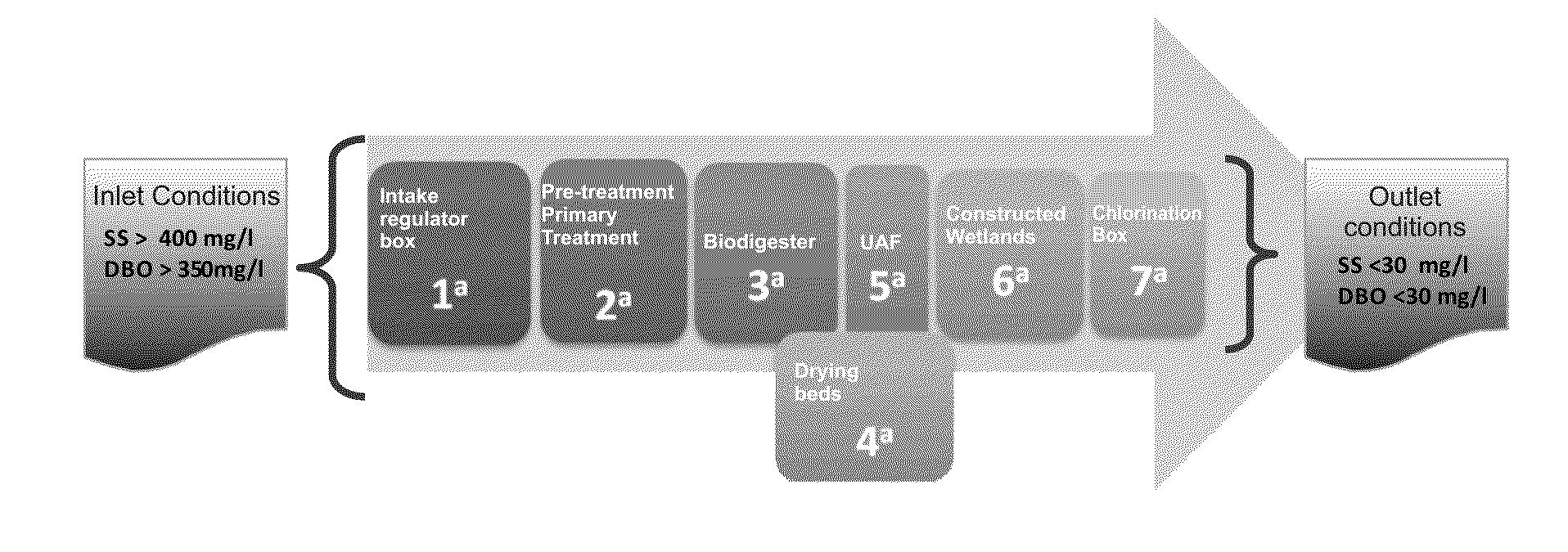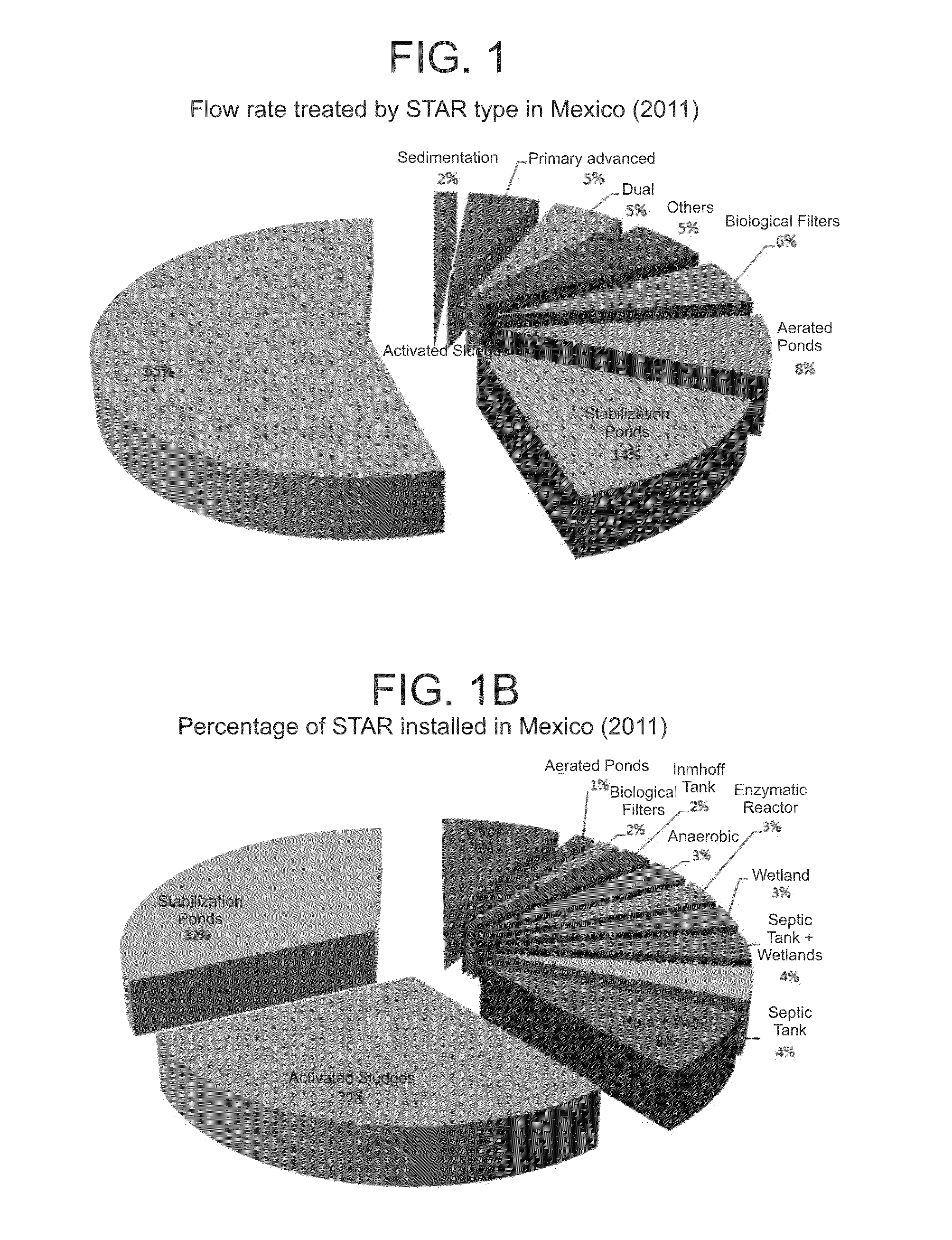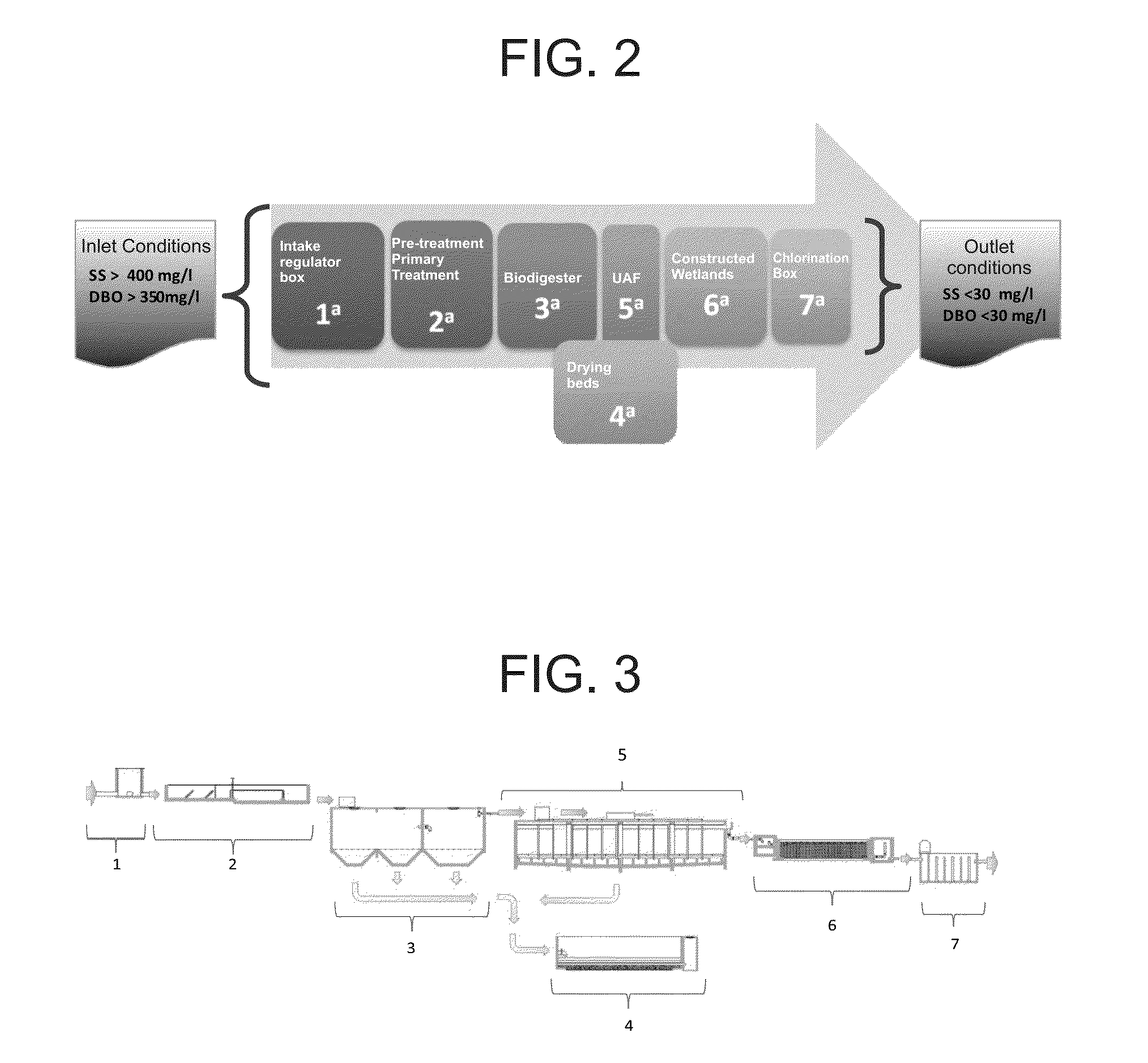System and multi-functional method for treating wastewater
a wastewater treatment and multi-functional technology, applied in the direction of specific water treatment objectives, water/sludge/sewage treatment, water contaminants, etc., can solve the problems of high energy consumption, high cost of wastewater treatment technology, and system efficiency differences
- Summary
- Abstract
- Description
- Claims
- Application Information
AI Technical Summary
Benefits of technology
Problems solved by technology
Method used
Image
Examples
example 1
Theoretical Assessment of the Pretreatment
[0130]Shown below is Table E, with the main parameters to be assessed in the desanding channels with the purpose of looking for the existent differences between the 2 operation regimes considered: the medium flow rate and the minimum flow rate and the recommended values in the literature (Crites and Tchbanoglous, 2000) (Reynolds and Richards, 1996. Metcalf and Eddy, Inc., 2003).
[0131]In the elaboration of Table E showing the results obtained in the assessment of the desanders at 3 different conditions of design flow, the dimensions of a single channel of the pretreatment system were considered corresponding to the 2nd stage of the PTAR of the invention.
[0132]With the dimensions of the proportional weir, the proportionality constant for the weir was calculated (k) (equation 1) from which the height value over the weir was obtained to which the design flow satisfies (equation 2). From the dimensions of the area of a channel and the design flow...
example 2
Theoretical Assessment of Biodigesters
[0138]The most important design and operation parameter in assessing the septic tanks is the hydraulic retention time, and in that sense mathematical models have been developed to predict the TSS and BOD removal efficiency in terms of hydraulic retention time (THR). In this assessment, the model proposes in (Metcalf and Eddy, Inc., 2003) is used, whose equation and constants are shown below in Table C.
TABLE CEquation for the theoretical calculation of TSS and BOD removal efficiencies as a function of TRHEquationUnitsLetterDescriptionE = TRH / (a +m2ERemoval efficiency (%)b*TRH)TRHHydraulic retention time (d)a,bEmpiricBODTSSconstants a0.0180.0075b0.020.014
[0139]By using this mathematical model, the 3 design flows were assessed obtaining the results shown in Table D, corresponding to: 1 to a minimum volume flow rate; 2 to a medium volume flow rate.
TABLE DTSS and BOD theoretical removal efficiencies in biodigestersDesign bases12Total useful volume (m...
example 3
Performance Assessment of the Up-Flow Anaerobic Filter
[0142]The performance of a fix-bed anaerobic reactor, in this case referred to as UAF, is carried out by verifying the diameter / depth ratio (d / Z), the up-flow rate (VL) and the BOD theoretical removal efficiency (Montalvo M. and Guerrero S., 2003). Table E has the diameter-depth ratio.
TABLE EDiameter-depth ratio in UAFValue inRecommended ParameterPTARvalueStone diameter (cm)18N / AFiltering media depth (m)1.5N / Ad / H ratio (m / m)0:120.5:2.0
[0143]The value found at the UAF for the diameter-depth ratio is low with respect to the recommended range (Montalvo M. and Guerrero S., 2003). This value indicates that if it was not a low solid affluent, the possibility of clogging would increase.
[0144]Several studies have shown that the surface plays a less important role compared to the interstices volume, where the active biomass will be suspended which degrade the organic matter, this is the reason why it is recommended to have a d / Z ratio ens...
PUM
| Property | Measurement | Unit |
|---|---|---|
| Length | aaaaa | aaaaa |
| Length | aaaaa | aaaaa |
| Length | aaaaa | aaaaa |
Abstract
Description
Claims
Application Information
 Login to View More
Login to View More - R&D
- Intellectual Property
- Life Sciences
- Materials
- Tech Scout
- Unparalleled Data Quality
- Higher Quality Content
- 60% Fewer Hallucinations
Browse by: Latest US Patents, China's latest patents, Technical Efficacy Thesaurus, Application Domain, Technology Topic, Popular Technical Reports.
© 2025 PatSnap. All rights reserved.Legal|Privacy policy|Modern Slavery Act Transparency Statement|Sitemap|About US| Contact US: help@patsnap.com



